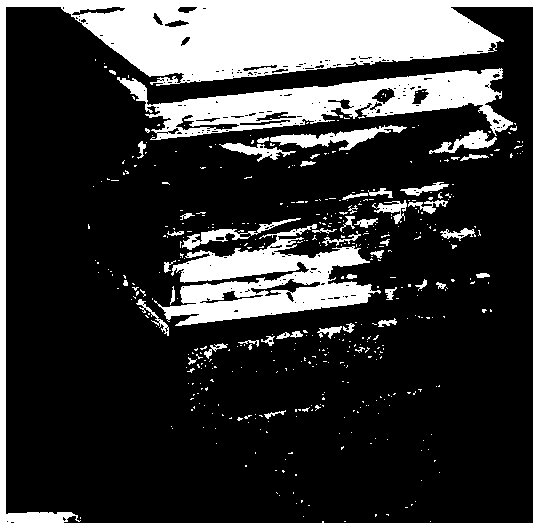Method for removing apis cerana cerana worker with syntretomorpha szaboi in vivo
A technology of Apis mellifera and Braconus, which is applied in the field of catching, trapping or frightening animals, can solve the problems of reducing bee colony potential, increasing the chance of bee colony damage, and troubles, so as to prevent bee colony harm and prevent bee colony damage. group hazard effect
- Summary
- Abstract
- Description
- Claims
- Application Information
AI Technical Summary
Problems solved by technology
Method used
Image
Examples
Embodiment 1
[0028] The method to remove the Chinese honeybee worker bees that have parasitized the larvae or eggs of the Chinese honeybees, including:
[0029] A. Separate the housekeeping bees: prepare a beehive (B) that is basically the same as the original beehive in terms of color and size. Move the original bee colony and the belt box (A) more than 1 meter away, and place the prepared bee in the original bee colony. In the beehive (B), one or more empty spleens are placed in the beehive (B) according to the original group situation; it is between 10:00 and 11:00 when the weather is fine, and the field bees are used to recognize the original nest and more than 10 nests will be out every day Second biological characteristics, collect field bees in the prepared beehive (B);
[0030] B. Separation of the bees that have parasitized the bees of Braconidae: After 11:00, the field bees collected in the hive (B) are moved to one side with the bee belt box, and the original bee colony and the bee b...
PUM
 Login to View More
Login to View More Abstract
Description
Claims
Application Information
 Login to View More
Login to View More - R&D
- Intellectual Property
- Life Sciences
- Materials
- Tech Scout
- Unparalleled Data Quality
- Higher Quality Content
- 60% Fewer Hallucinations
Browse by: Latest US Patents, China's latest patents, Technical Efficacy Thesaurus, Application Domain, Technology Topic, Popular Technical Reports.
© 2025 PatSnap. All rights reserved.Legal|Privacy policy|Modern Slavery Act Transparency Statement|Sitemap|About US| Contact US: help@patsnap.com



